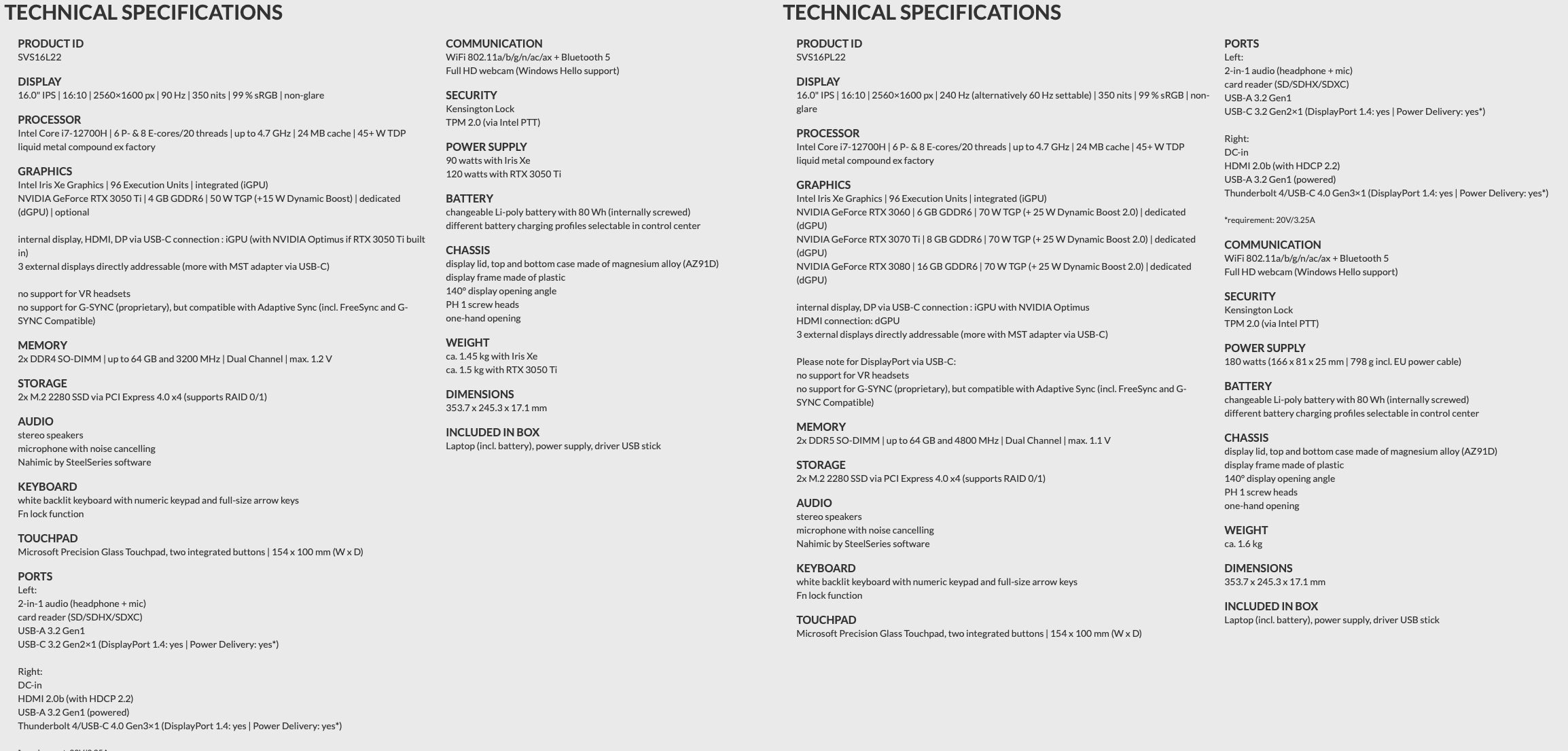Schenker Packs 14-Core CPU and GeForce RTX 3080 into Ultra-Thin Laptop
Schenker's Vision 16 laptops are 17.1 mm thick, pack high-performance hardware.
Schenker has introduced its new Vision 16 and Vision 16 Pro ultrabooks that bring together performance, portability, low weight, and upgradeability. The 16-inch machines are based on Intel's Core i7-12700H processor with 14 cores and can be equipped with up to Nvidia's GeForce RTX 3080 Laptop graphics subsystem, but their weight is still lower when compared to Apple's MacBook Pro 14.
Schenker's Vision 16 and Vision 16 Pro machines are based on Intel's Core i7-12700H (six performance cores at up to 4.70 GHz, eight efficiency cores at up to 3.50 GHz, Intel Xe Graphics, 45W PBP, 115W MTP) that is paired with Nvidia's GeForce RTX 3050 Ti 4GB (vanilla Vision 16), GeForce RTX 3060 6GB, RTX 3070 Ti 8GB, or RTX 3080 with 16GB GDDR6 memory (Vision Pro 16). To ensure consistent performance of CPU and GPU, Schenker's 16-inch mobile PCs are equipped with a cooling system featuring three heat pipes and two blowers, according to an image published by VideoCardz.
The laptops can be equipped with up to 64GB of DDR4-3200 (Vision 16) or DDR5-4800 (Vision Pro 16) memory as well as two M2-2280 SSDs with a PCIe 4.0 x4 interface. Both devices are user upgradeable.
When it comes to displays, the Vision 16 is equipped with a non-glare 2560 x 1600 LCD, a 350 nits luminance, and a 90 Hz refresh rate, whereas the Vision 16 Pro comes with a non-glare 2560 x 1600 LCD, a 350 nits brightness, with a 240 Hz refresh rate.
As for connectivity, the machines offer two Thunderbolt 4 ports, one USB Type-C connector, two USB 3.0 Type-A ports, an HDMI 2.1 display output, an SD card reader and an audio jack for headsets. The laptops come with Wi-Fi 6 and Bluetooth 5.0 on board to connect to the internet and peripherals.
The Vision 16 and Vision 16 Pro notebooks use the same magnesium alloy chassis that measure 354 x 245 x17.1 mm and weight starting at 1.45 kilograms for the version with Intel integrated graphics, 1.5 kilograms for model with GeForce RTX 3050 Ti discrete GPU, or 1.6 kilograms for SKUs with higher-performance graphics processors. To put the numbers into context, the laptops are slightly thicker than Apple's MacBook Pro 16 with M1 Pro or M1 Max SoCs (17.1 mm vs 16.8 mm) and yet their weight does not exceed that of Apple's MacBook Pro 14 (1.6 kilograms).
The cheapest Schenker Vision 16 starts at €1,549 without shipping ($1,298 without VAT), whereas the most affordable Schenker Vision Pro 16 starts at €1,899 without shipping ($1,592 without VAT). Both machines will be available in November.
Get Tom's Hardware's best news and in-depth reviews, straight to your inbox.
Like many other suppliers of gaming notebooks, Schenker uses barebones built by Clevo. That said, expect other brands to offer their high-performance ultrabooks using the same barebones featuring similar configurations and offering a 17.1 mm thickness as well as an up to 1.6 kilograms weight.

Anton Shilov is a contributing writer at Tom’s Hardware. Over the past couple of decades, he has covered everything from CPUs and GPUs to supercomputers and from modern process technologies and latest fab tools to high-tech industry trends.
-
JWNoctis Up to 95W on a mobile RTX 3080, on a model with choices from RTX 3060 to RTX 3080?Reply
Unless there's a good use case where mere 8GB of VRAM just won't do...Check benchmarks, and caveat emptor. -
watzupken There is nothing difficult slapping high end specs into a thin chassis. The real challenge is to keep them running at peak/ high performance, which every laptop maker falls flat. That's just because it is physically not possible to have an elaborate cooling in a very slim chassis. To me, adding more and more heatpipes for laptop cooling is not going to solve the problem. The key issue is, the heatsink(s) are too small and quickly becomes the bottleneck once you load the CPU, and/or, GPU.Reply

